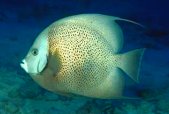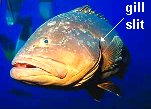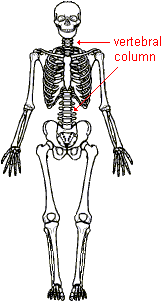Is a Blue Crab a Fishbirdmammalinvertebratereptile or Amphibian
The highest category in the traditional Linnaean system of classification is the kingdom . At this level, organisms are distinguished on the basis of cellular organization and methods of nutrition. Whether they are single- or multiple-celled and whether they absorb, ingest, or produce food are critical factors. Based on these types of distinctions, the biological sciences define at least five kingdoms of living things:
| Kingdom | Types of Organisms | |
| | | |
| Monera | bacteria, blue-green algae (cyanobacteria), and spirochetes | |
| Protista | protozoans and algae of various types | |
| Fungi | funguses, molds, mushrooms, yeasts, mildews, and smuts | |
| Plantae | mosses, ferns, woody and non-woody flowering plants | |
| Animalia | sponges, worms, insects, fish, amphibians, reptiles, birds, and mammals |
Most macroscopic creatures are either plants or animals. Of course, humans are animals. The distinction between the plant and animal kingdoms is based primarily on the sources of nutrition and the capability of locomotion or movement. Plants produce new cell matter out of inorganic material by photosynthesis. They do not have the ability to move around their environment except by growing or being transported by wind, water, or other external forces.
 |  | |
| Kingdom Animalia | ||
| Kingdom Plantae |
In contrast, animals do not produce their own food but must eat other organisms to obtain it. Animals are generally more complex structurally. Unlike plants, they have nerves and muscles that aid in rapid, controlled movement around their environment. Animal cells usually do not have rigid walls like those of plants. This accounts for the fact that your skin and flesh are flexible and the trunk of a tree is not.
This simple dichotomy between plants and animals is not adequate to encompass all life forms. Some organisms have characteristics which do not qualify them to fit neatly into either kingdom. For instance, funguses and most bacteria do not photosynthesize and most of them lack a means of controlled locomotion. Some organisms have attributes of both plants and animals. For instance, there is a group of common single-cell species living in fresh water ponds called Euglena that photosynthesize and have their own means of locomotion (whip-like tail structures called flagella). Because of these and other exceptions, new kingdoms of living things had to be created.
Research done over the last half century has shown us that there are even stranger single-celled organisms known as archaeobacteria that live in extremely harsh anaerobic environments such as hot springs, deep ocean volcanic vents, sewage treatment plants, and swamp sediments. Unlike other life forms, they usually get their energy from geological sources rather than from the sun. There are also microscopic things that are not quite alive by definition but have some characteristics that are similar to living things. These are the viruses and prions. It is easy to overlook the importance of these extremely small things because they cannot be seen with the naked eye. However, there are very likely around ten times as many viruses as all living things put together. There are about 50 million viruses in 1 cm � of ocean water. It has been estimated that these viruses are responsible for the death of 20% of all oceanic bacteria every day, thereby keeping the phenomenal reproductive capability of bacteria under control. There are also complex interactions between bacteria, viruses, and other microbial life forms within our own bodies. Most of the time, there are about 10 times as many microbial cells within us as there are body cells.
Phylum
Immediately below kingdom is the phylum ![]() level of classification. At this level, animals are grouped together based on similarities in basic body plan or organization. For instance, species in the phylum Arthropoda
level of classification. At this level, animals are grouped together based on similarities in basic body plan or organization. For instance, species in the phylum Arthropoda ![]() have external skeletons as well as jointed bodies and limbs. Insects, spiders, centipedes, lobsters, and crabs are all arthropods.
have external skeletons as well as jointed bodies and limbs. Insects, spiders, centipedes, lobsters, and crabs are all arthropods.
In contrast, members of the phylum Mollusca ![]() have soft, unsegmented bodies that are usually, but not always, enclosed in hard shells. They also usually have at least one strong foot that helps them move. Octopi, squids, cuttlefish, snails, slugs, clams, and other shellfish are mollusk s.
have soft, unsegmented bodies that are usually, but not always, enclosed in hard shells. They also usually have at least one strong foot that helps them move. Octopi, squids, cuttlefish, snails, slugs, clams, and other shellfish are mollusk s.
 | |
| Bilateral symmetry (phylum Chordata) |
There are at least 33 phyla (plural of phylum) of animals. Humans are members of the phylum Chordata ![]() . All of the chordates have elongated bilaterally symmetrical
. All of the chordates have elongated bilaterally symmetrical ![]() bodies. That is to say, the left and right sides are essentially mirror images of each other. If there are two functionally similar body parts, they are usually found roughly equidistant from the center line, parallel to each other. Note the location of the woman's eyes, nostrils, and cheeks relative to the center line of her body.
bodies. That is to say, the left and right sides are essentially mirror images of each other. If there are two functionally similar body parts, they are usually found roughly equidistant from the center line, parallel to each other. Note the location of the woman's eyes, nostrils, and cheeks relative to the center line of her body.
 | |
| Gill slits (phylum Chordata) |
At some time in their life cycle, chordates have a pair of lateral gill slits or pouches used to obtain oxygen in a liquid environment. In the case of humans, other mammals, birds, and reptiles, lungs replace rudimentary gill slits after the embryonic stage of development. Frogs replace them with lungs in the transition from tadpoles to adults. Fish retain their gill slits all of their lives.
Chordates also have a notochord ![]() at some phase in their life cycle. This is a rudimentary internal skeleton made of stiff cartilage that runs lengthwise under the dorsal surface of the body. Generally, there is a single hollow nerve chord on top of the notochord. Among humans and the other vertebrates, the notochord is replaced by a more complex skeleton following the embryonic stage of development.
at some phase in their life cycle. This is a rudimentary internal skeleton made of stiff cartilage that runs lengthwise under the dorsal surface of the body. Generally, there is a single hollow nerve chord on top of the notochord. Among humans and the other vertebrates, the notochord is replaced by a more complex skeleton following the embryonic stage of development.
Members of the phylum Chordata also often have a head, a tail, and a digestive system with an opening at both ends of the body. In other words, the body organization is essentially that of a tube in which food enters one end and waste matter passes out of the other. The chordates include mammals, birds, reptiles, amphibians, fish, as well as the primitive lancelets (or amphioxus ) and tunicates (or sea squirts).
 | |
| Human skeleton |
Subphylum
The chordates are divided into three subphyla. Humans are members of the subphylum Vertebrata ![]() . Among the vertebrates, the simple hollow dorsal nerve tube is replaced by a more complex tubular bundle of nerves called a spinal cord. A segmented vertebral (or spinal) column of cartilage and/or bone develops around the spinal cord of vertebrates to protect it from injury. At one end of the spinal cord is a head with a brain and paired sense organs that function together to coordinate movement and sensation.
. Among the vertebrates, the simple hollow dorsal nerve tube is replaced by a more complex tubular bundle of nerves called a spinal cord. A segmented vertebral (or spinal) column of cartilage and/or bone develops around the spinal cord of vertebrates to protect it from injury. At one end of the spinal cord is a head with a brain and paired sense organs that function together to coordinate movement and sensation.
Vertebrata is the most advanced and numerous subphylum of chordates. It includes all of the fish, amphibians, reptiles, birds, and mammals. Collectively, there are about 43,000 living vertebrate species in comparison to just over 1500 species in the other two invertebrate subphyla of chordates.
NOTE: Because science is constantly expanding our knowledge of living things, the precise details of how organisms are classified in the Linnaean system are frequently in flux. This is not due to confusion but rather to the evolution of our understanding brought about by new discoveries. For instance, as a result of the discovery of a dramatically new form of life known as archaeobacteria, a growing number of rese archers now use a classification level above kingdoms referred to as a domain. They define 3 domains of living things: Archaeo (simple bacteria-like organisms that live in extremely harsh anaerobic environments--these are the archaeobacteria), Bacteria (all other bacteria, blue-green algae, and spirochetes), and Eukarya (organisms with distinct nuclei in their cells--protozoans, fungi, plants, and animals).
Copyright � 1998-2013 by Dennis O'Neil. All rights reserved.
illustration credits
Source: https://www2.palomar.edu/anthro/animal/animal_3.htm
0 Response to "Is a Blue Crab a Fishbirdmammalinvertebratereptile or Amphibian"
Post a Comment